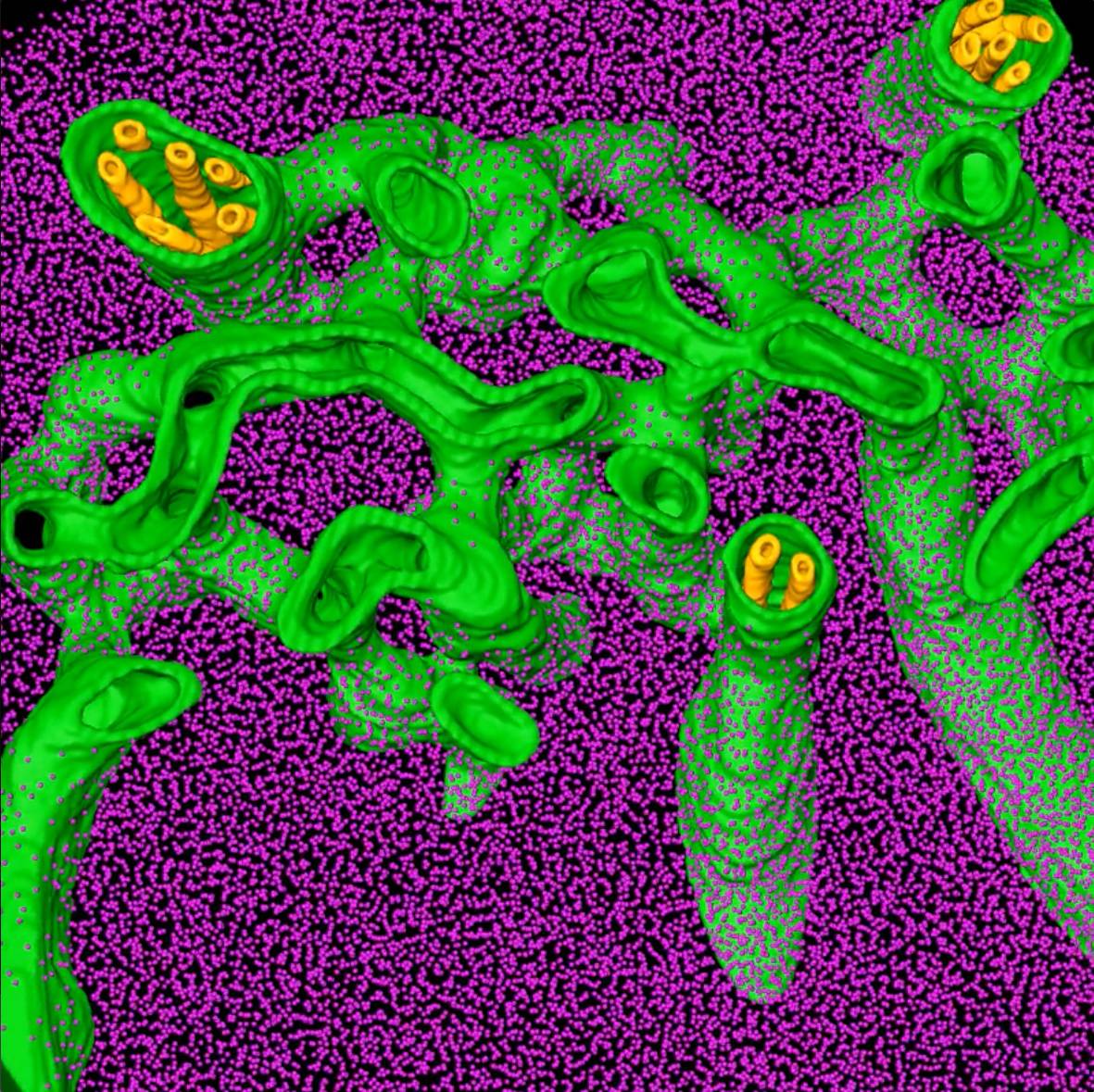
In this image, the researchers used a technique called cryo-electron tomography to image an algal structure called the pyrenoid, which concentrates carbon dioxide to make it more readily available for photosynthetic enzymes (purple). The yellow tubules inside the green tubes are thought to bring carbon and other materials into the pyrenoid. Credit: Benjamin Engel, Max Planck Institute of Biochemistry
The algae plaguing your swimming pool in the summer may also be the key to faster growing crops.
In a pair of studies, researchers revealed new insights on how green algae siphons carbon dioxide from the air for use in photosynthesis—which is crucial to the organism’s ability to quickly grow. They also found that the pyrenoid—previously believed to be a solid structure—actually behaves like a liquid droplet that can dissolve into the surrounding cellular medium when the algal cells divide.
“Understanding how algae can concentrate carbon dioxide is a key step toward the goal of improving photosynthesis in other plants,” Martin Jonikas, an assistant professor of molecular biology at Princeton University and leader of the studies, which included collaborators at the Max Planck Institute of Biochemistry in Germany and the Carnegie Institution for Science on the Stanford University campus, said in a statement.
“If we could engineer other crops to concentrate carbon, we could address the growing world demand for food,” he added.
Aquatic algae and other plants boost the rate of photosynthesis through carbon-concentrating mechanisms. Plants use an enzyme called Rubisco to fix carbon dioxide into sugar that is used or stored by the plant.
Algae plants cluster Rubisco enzymes inside the pyrenoid, sub-cellular micro-compartments found in chloroplasts of many algae. This is where enzymes encounter high concentrations of carbon dioxide pumped in from the air, which allows the enzymes to work faster.
During the first study, the researchers conducted a sweeping search for proteins involved in the carbon-concentrating mechanism of an algae species called Chlamydomonas reinhardtii. The researchers developed techniques to rapidly label and evaluate the algal proteins and identify the locations and functions of each protein, detailing the physical interaction between the proteins to create a pyrenoid interactome.
The search yielded 89 new pyrenoid proteins, including some that may usher carbon into the pyrenoid and others that are required for formation of the pyrenoid, as well as three previously unknown layers of the pyrenoid that surround the organelle.
“The information represents the best assessment yet of how this essential carbon-concentrating machinery is organized and suggests new avenues for exploring how it works,” Luke Mackinder, the study’s first author and a former postdoctoral researcher at the Carnegie Institution, who now leads a team of researchers at the University of York, U.K, said in a statement.
The researchers found in the second study that the pyrenoid was actually liquid-like by imaging the algae while the organisms were living by using a yellow fluorescent protein to label Rubisco.
The researchers also froze and prepared whole algae cells and then imaged them with an electron microscope.
“This is one of the rare examples where classical genetics, cell biology and high-resolution imaging approaches were all brought together in one investigation,” Engel said.
Additional studies are need to ensure the availability of fast-growing crops for an expanding world population.




